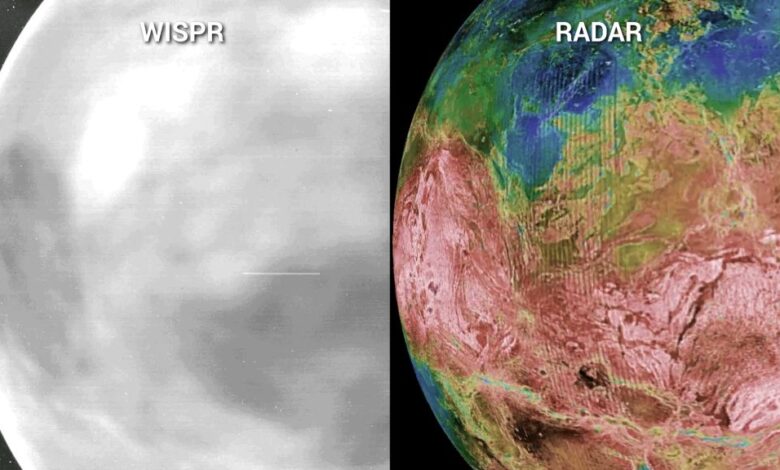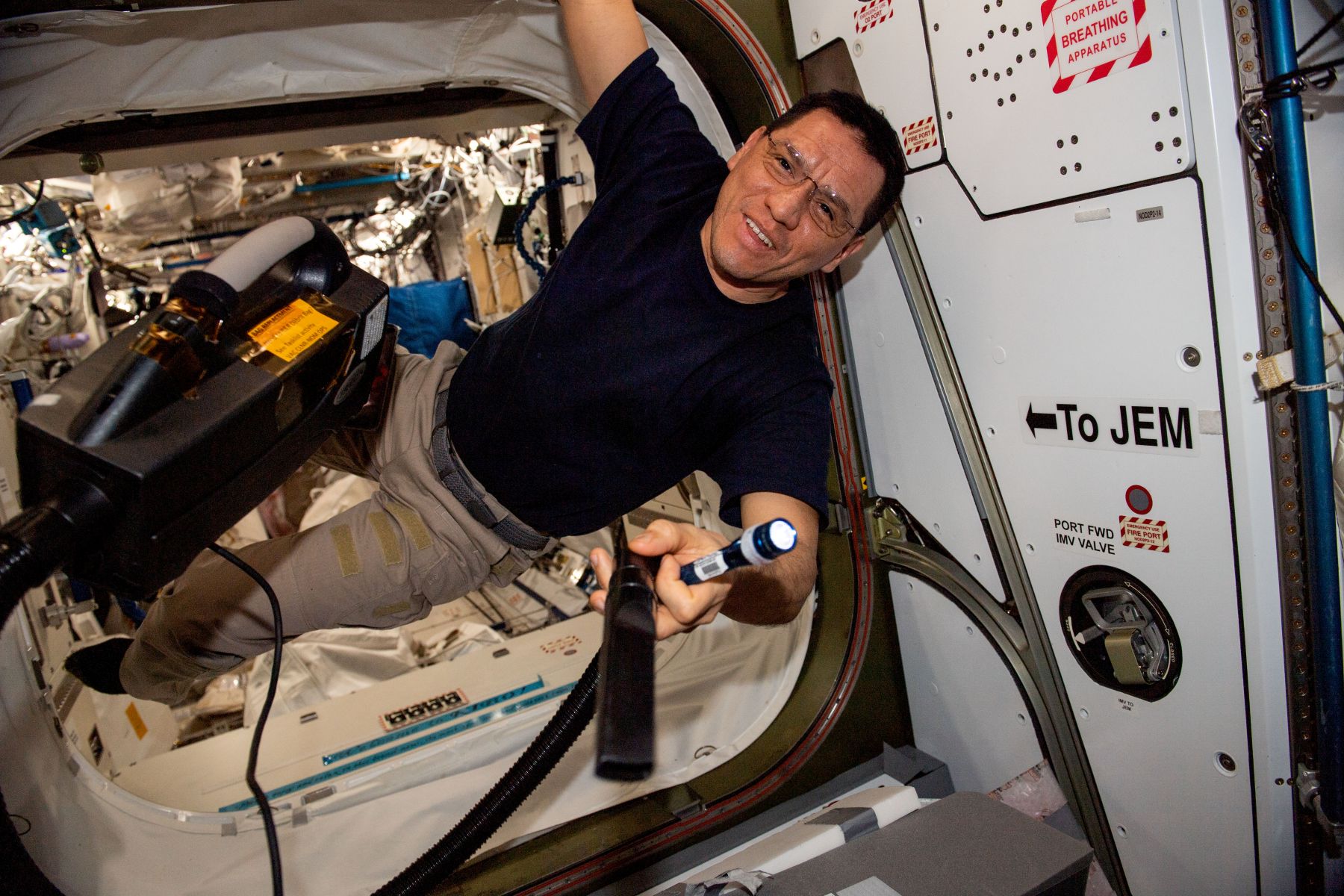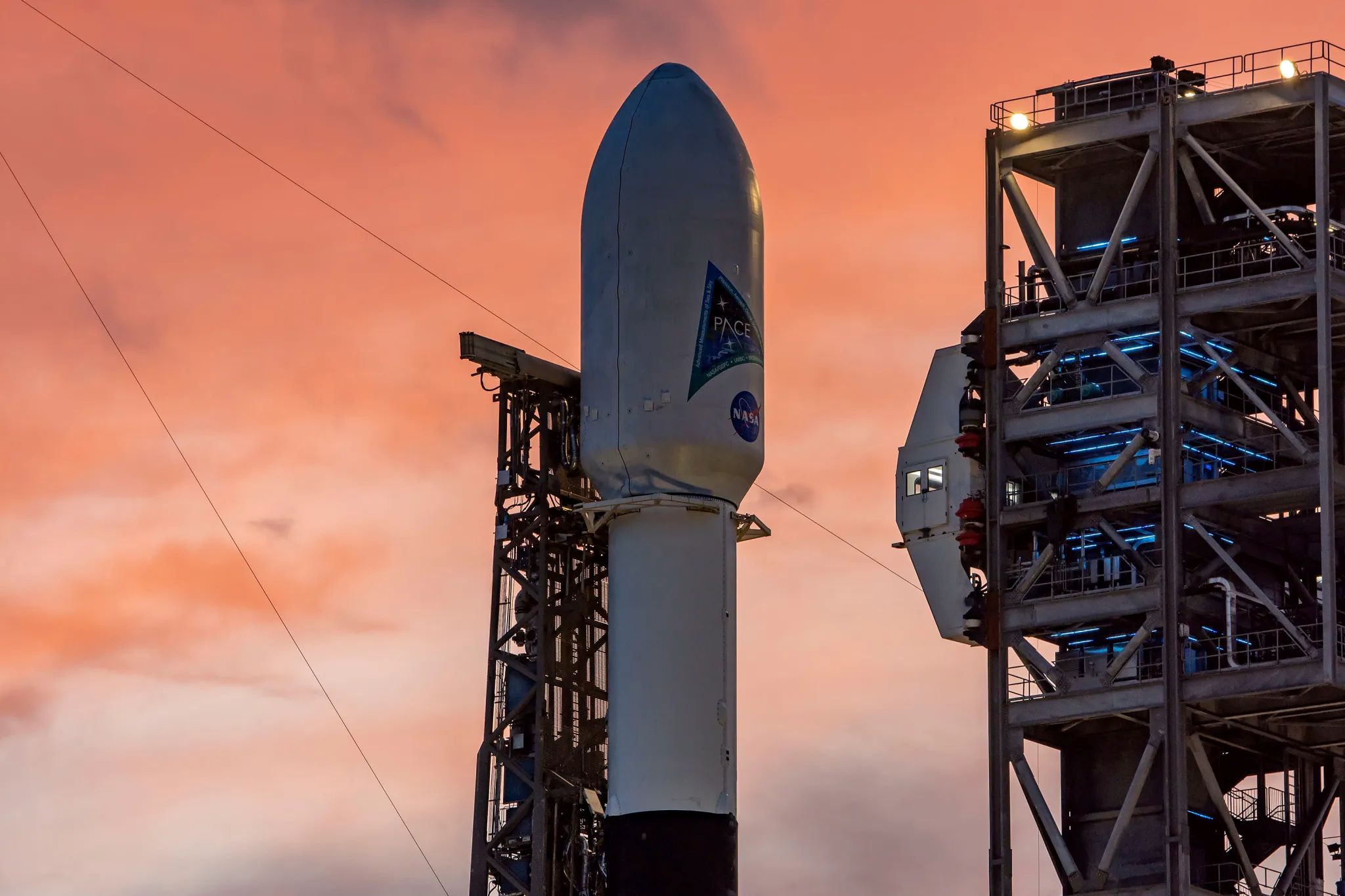Final Venus Flyby for NASA’s Parker Solar Probe Queues Closest Sun Pass

On Wednesday, Nov. 6, 2024, NASA’s Parker Solar Probe will complete its final Venus gravity assist maneuver, passing within 233 miles (376 km) of Venus’ surface. The flyby will adjust Parker’s trajectory into its final orbital configuration, bringing the spacecraft to within an unprecedented 3.86 million miles of the solar surface on Dec. 24, 2024. It will be the closest any human made object has been to the Sun.
Parker’s Venus flybys have become boons for new Venus science thanks to a chance discovery from its Wide-Field Imager for Parker Solar Probe, or WISPR. The instrument peers out from Parker and away from the Sun to see fine details in the solar wind. But on July 11, 2020, during Parker’s third Venus flyby, scientists turned WISPR toward Venus in hopes of tracking changes in the planet’s thick cloud cover. The images revealed a surprise: A portion of WISPR’s data, which captures visible and near infrared light, seemed to see all the way through the clouds to the Venusian surface below.
“The WISPR cameras can see through the clouds to the surface of Venus, which glows in the near-infrared because it’s so hot,” said Noam Izenberg, a space scientist at the Johns Hopkins Applied Physics Laboratory in Laurel, Maryland.
Venus, sizzling at approximately 869 degrees Fahrenheit (about 465 C), was radiating through the clouds.
The WISPR images from the 2020 flyby, as well as the next flyby in 2021, revealed Venus’ surface in a new light. But they also raised puzzling questions, and scientists have devised the Nov. 6 flyby to help answer them.

Left: A series of WISPR images of the nightside of Venus from Parker Solar Probe’s fourth flyby showing near infrared emissions from the surface. In these images, lighter shades represent warmer temperatures and darker shades represent cooler. Right: A combined mosaic of radar images of Venus’ surface from NASA’s Magellan mission, where the brightness indicates radar properties from smooth (dark) to rough (light), and the colors indicate elevation from low (blue) to high (red).
NASA/APL/NRL (left), Magellan Team/JPL/USGS (right)
The Venus images correspond well with data from the Magellan spacecraft, showing dark and light patterns that line up with surface regions Magellan captured when it mapped Venus’ surface using radar from 1990 to 1994. Yet some parts of the WISPR images appear brighter than expected, hinting at extra information captured by WISPR’s data. Is WISPR picking up on chemical differences on the surface, where the ground is made of different material? Perhaps it’s seeing variations in age, where more recent lava flows added a fresh coat to the Venusian surface.
“Because it flies over a number of similar and different landforms than the previous Venus flybys, the Nov. 6 flyby will give us more context to evaluate whether WISPR can help us distinguish physical or even chemical properties of Venus’ surface,” Izenberg said.
After the Nov. 6 flyby, Parker will be on course to swoop within 3.8 million miles of the solar surface, the final objective of the historic mission first conceived over 65 years ago. No human-made object has ever passed this close to a star, so Parker’s data will be charting as-yet uncharted territory. In this hyper-close regime, Parker will cut through plumes of plasma still connected to the Sun. It is close enough to pass inside a solar eruption, like a surfer diving under a crashing ocean wave.
“This is a major engineering accomplishment,” said Adam Szabo, project scientist for Parker Solar Probe at NASA’s Goddard Space Flight Center in Greenbelt, Maryland.
The closest approach to the Sun, or perihelion, will occur on Dec. 24, 2024, during which mission control will be out of contact with the spacecraft. Parker will send a beacon tone on Dec. 27, 2024, to confirm its success and the spacecraft’s health. Parker will remain in this orbit for the remainder of its mission, completing two more perihelia at the same distance.
Parker Solar Probe is part of NASA’s Living with a Star program to explore aspects of the Sun-Earth system that directly affect life and society. The Living with a Star program is managed by the agency’s Goddard Space Flight Center in Greenbelt, Maryland, for NASA’s Science Mission Directorate in Washington. The Johns Hopkins Applied Physics Laboratory in Laurel, Maryland, manages the Parker Solar Probe mission for NASA and designed, built, and operates the spacecraft.
By Miles Hatfield
NASA’s Goddard Space Flight Center, Greenbelt, Md.





